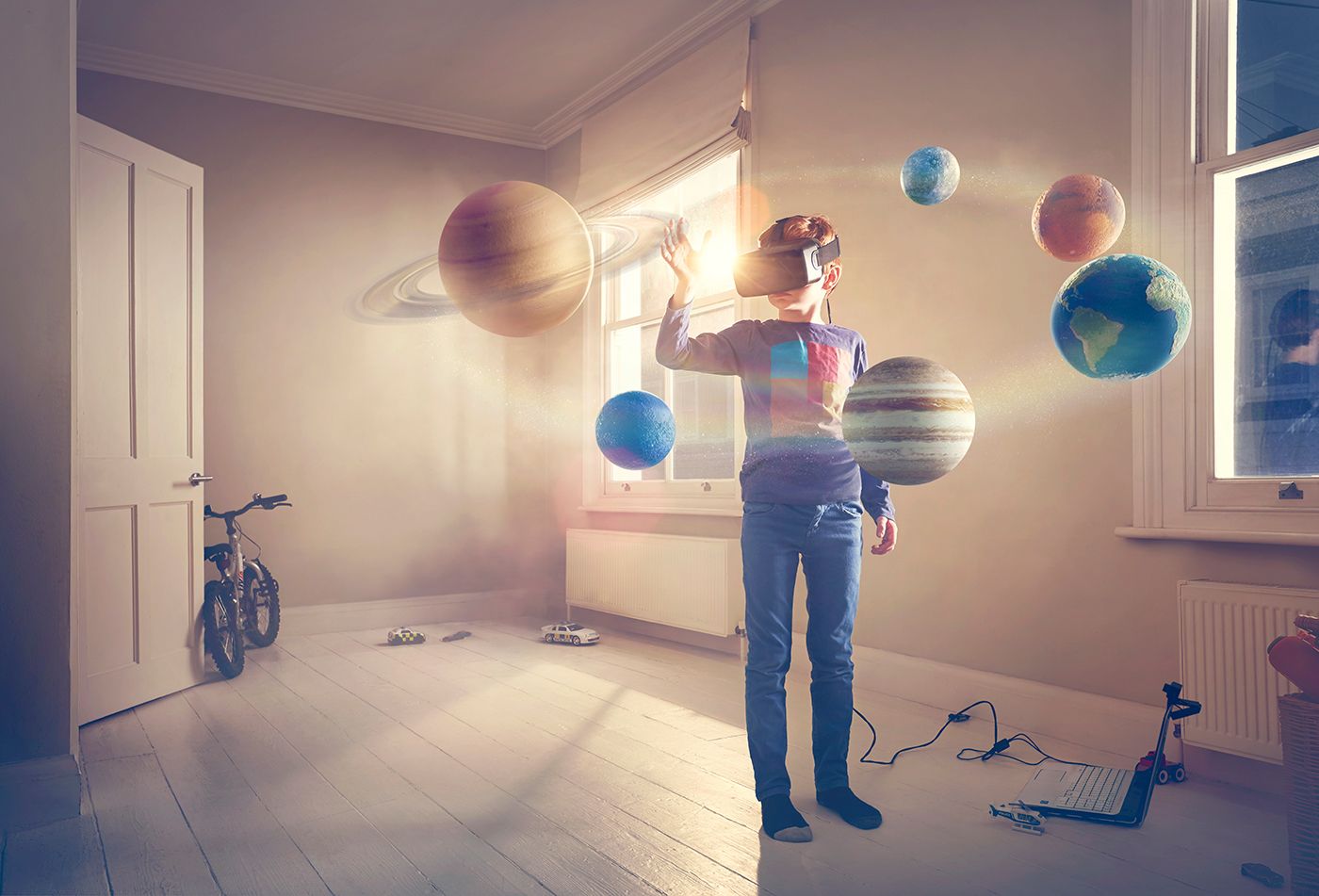
Introduction
In recent years, virtual reality (VR) has emerged as a transformative technology with the potential to revolutionize various industries. One of the most promising areas of application is education. This article explores how virtual reality is reshaping the landscape of learning, providing immersive experiences that engage students in ways previously unimaginable.
1. Engaging and Immersive Learning Environments
Traditional classrooms often struggle to fully engage students, particularly when it comes to complex or abstract concepts. Virtual reality creates immersive learning environments that transport students to different places, eras, or even into microscopic worlds. This level of immersion sparks curiosity and makes learning more memorable and enjoyable.
Through VR headsets, students can step into ancient civilizations, witness historical events, or explore the intricacies of biological cells. For instance, history classes can become dynamic journeys through time, allowing students to experience pivotal moments firsthand. This not only enhances comprehension but also encourages a genuine passion for learning.
2. Experiential Learning and Skill Development
VR allows for experiential learning, enabling students to actively participate and interact with the subject matter. For example, in history classes, students can virtually visit historical sites and witness key events. In science, they can conduct virtual experiments. This hands-on approach fosters a deeper understanding and retention of information.
Consider a biology class where students don VR headsets to explore a virtual rainforest. They can observe and interact with diverse flora and fauna, gaining insights that textbooks simply can’t provide. This experiential learning cements knowledge and sparks a curiosity for the natural world.

3. Accessibility and Inclusivity
Virtual reality has the potential to level the playing field for students with diverse learning needs. It can provide tailored experiences to accommodate different learning styles, making education more accessible to all. For example, visual learners can benefit from immersive 3D models, while auditory learners can engage with interactive audio content.
Furthermore, for students with physical disabilities or limitations, VR can offer experiences that might be otherwise inaccessible. Through VR, they can virtually explore places and concepts that were once beyond their reach. This inclusivity in education is a powerful testament to the potential of VR.
4. Overcoming Physical Constraints
Certain subjects, like astronomy or marine biology, can be challenging to teach in traditional classroom settings due to physical constraints. VR breaks down these barriers by allowing students to explore outer space or dive into the depths of the ocean from the comfort of their classroom. This opens up new possibilities for teaching and learning.
Imagine a physics class where students can step into a virtual laboratory, conducting experiments in a zero-gravity environment. They can observe the behavior of celestial bodies or experiment with physical laws in ways that were previously inconceivable. This immersive learning transcends the limitations of a physical classroom.

5. Simulations for Practical Training
In fields like medicine, aviation, and engineering, hands-on experience is crucial. VR can provide realistic simulations for training purposes. Medical students can practice surgeries, pilots can simulate flight scenarios, and engineers can troubleshoot complex machinery, all within a safe and controlled virtual environment.
Medical training, in particular, stands to benefit immensely from VR. Surgeons can rehearse complex procedures in a risk-free environment, enhancing their skills and confidence before stepping into an actual operating room. This not only improves patient outcomes but also boosts the overall competence of medical professionals.
6. Global and Collaborative Learning
VR enables students from around the world to come together in virtual classrooms, fostering a sense of global community and cultural exchange. Collaborative projects and discussions take on a new dimension as students interact in virtual spaces, breaking down geographical boundaries and broadening their perspectives.
Through VR-based collaborations, students can gain valuable insights into different cultures, languages, and perspectives. They can work together on projects that span continents, learning to appreciate diversity and navigate cross-cultural communication. This globalized approach to education prepares students for an increasingly interconnected world.
7. Fostering Creativity and Innovation
Virtual reality empowers students to unleash their creativity and explore new forms of expression. They can design and create their own virtual worlds, artworks, and simulations. This not only enhances their technical skills but also encourages out-of-the-box thinking and problem-solving.
Consider a virtual art studio where students can sculpt, paint, and design in three-dimensional space. They can experiment with different materials and techniques, pushing the boundaries of traditional art forms. This creative freedom nurtures innovation and instills a sense of agency in students.

8. Ethical Considerations and Digital Literacy
While VR offers immense potential, it also raises ethical considerations. Issues of privacy, data security, and ensuring age-appropriate content must be addressed. Additionally, as VR becomes more integrated into education, digital literacy becomes a crucial skill for students to navigate and utilize this technology effectively.
Educators and policymakers must collaborate to establish guidelines and standards for the ethical use of VR in education. This includes safeguarding students’ privacy, ensuring that VR experiences are age-appropriate, and providing the necessary resources to educate students about digital citizenship and responsible VR usage.
Conclusion
Virtual reality is poised to revolutionize education, providing students with immersive and interactive learning experiences. From creating engaging environments to fostering inclusivity and practical training, the impact of VR on education is profound. As technology continues to advance, its integration into classrooms worldwide holds the promise of transforming the way we teach and learn.
As educators and technologists work hand-in-hand, virtual reality has the potential to unlock new dimensions of knowledge and inspire a lifelong love for learning. With thoughtful implementation and a focus on ethical considerations, VR stands to be a cornerstone of 21st-century education, preparing students for a future defined by innovation, collaboration, and boundless curiosity.
Leave a Reply